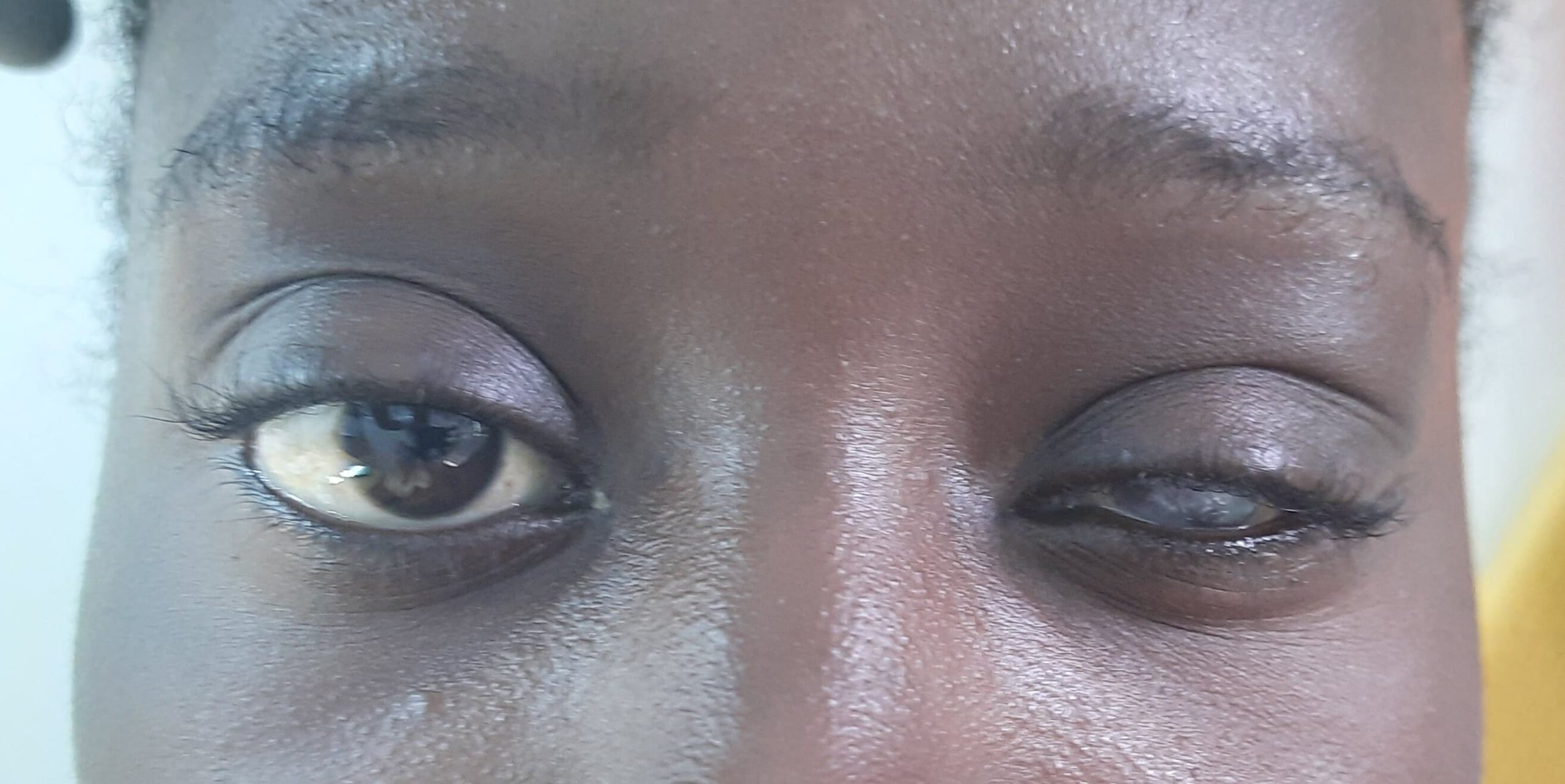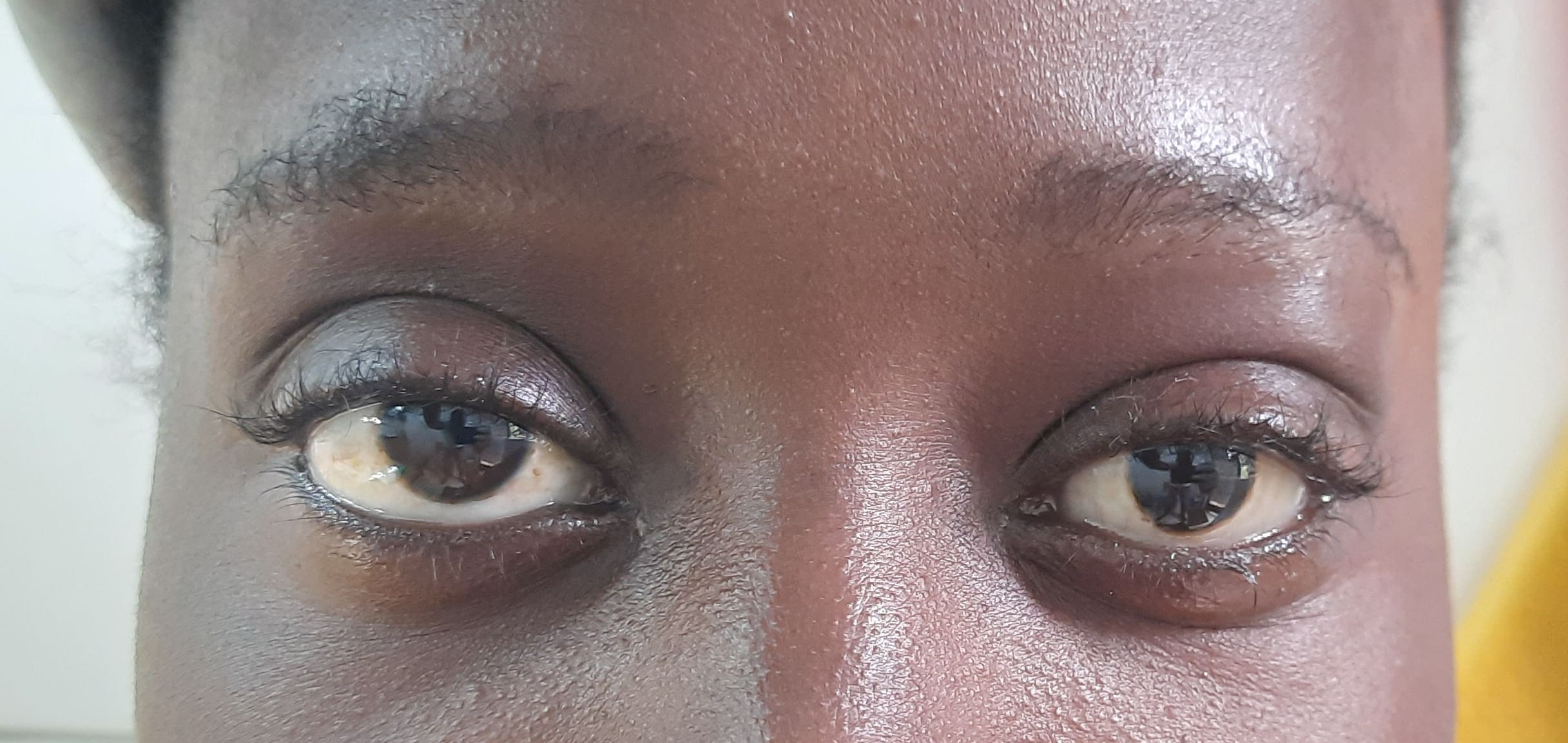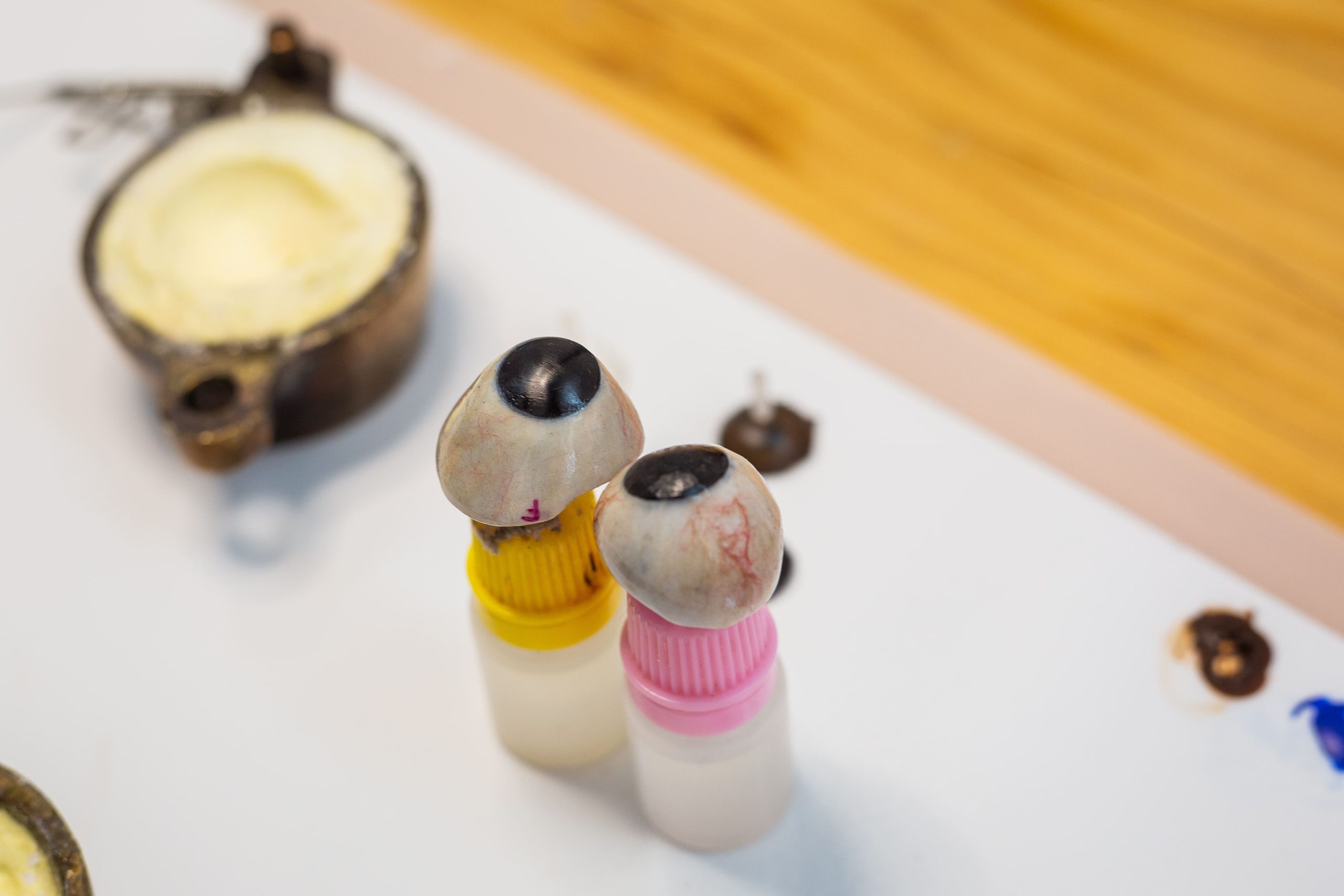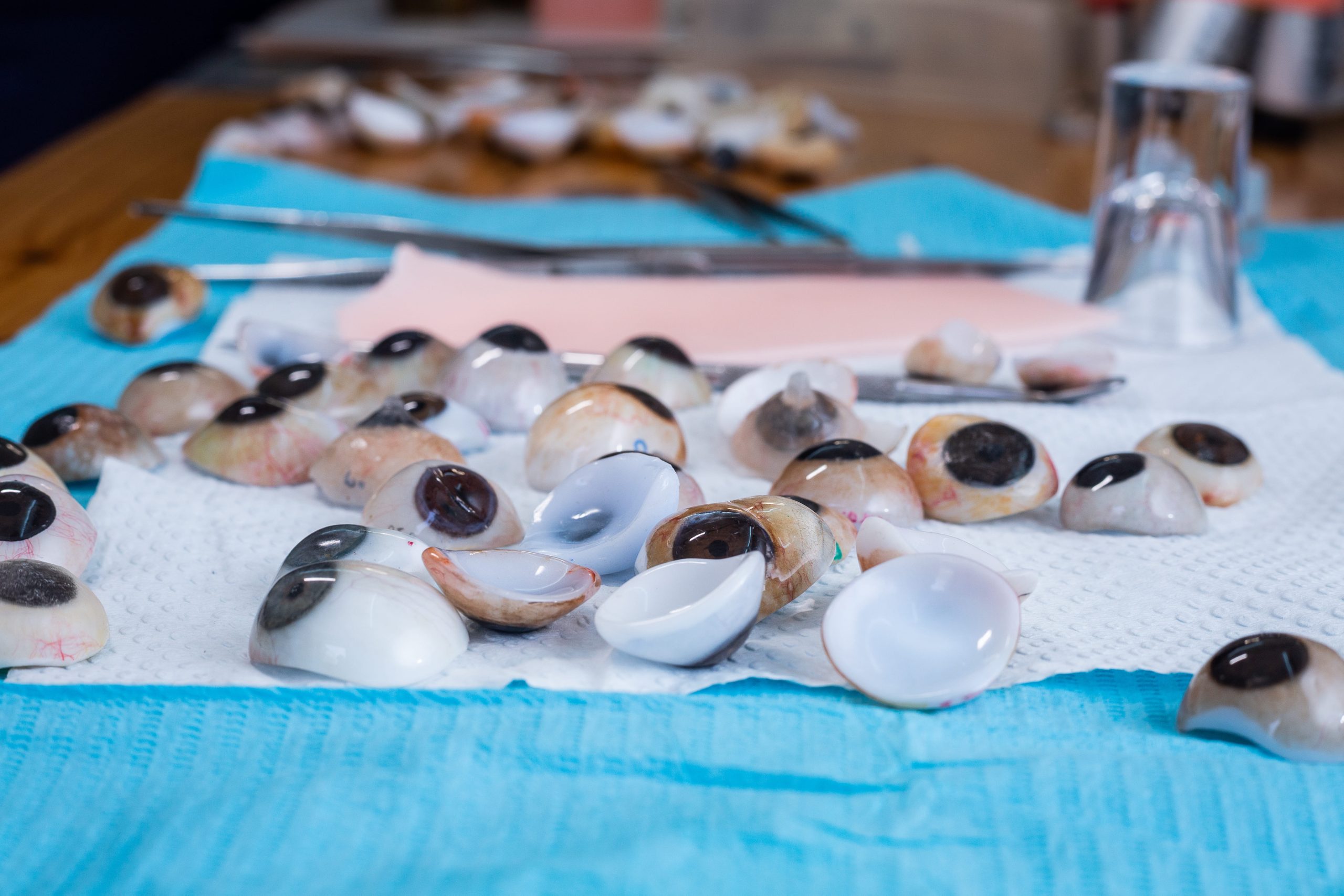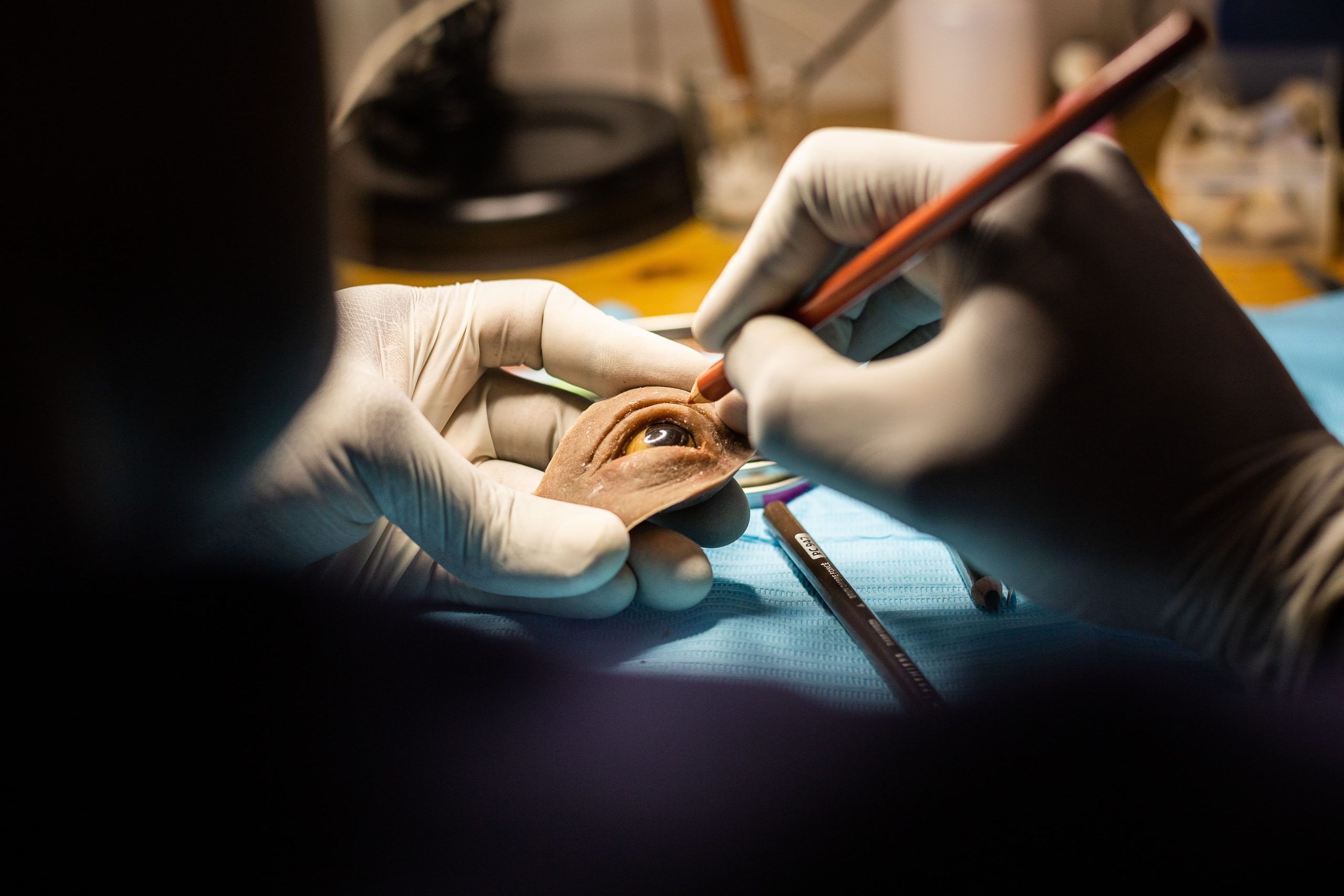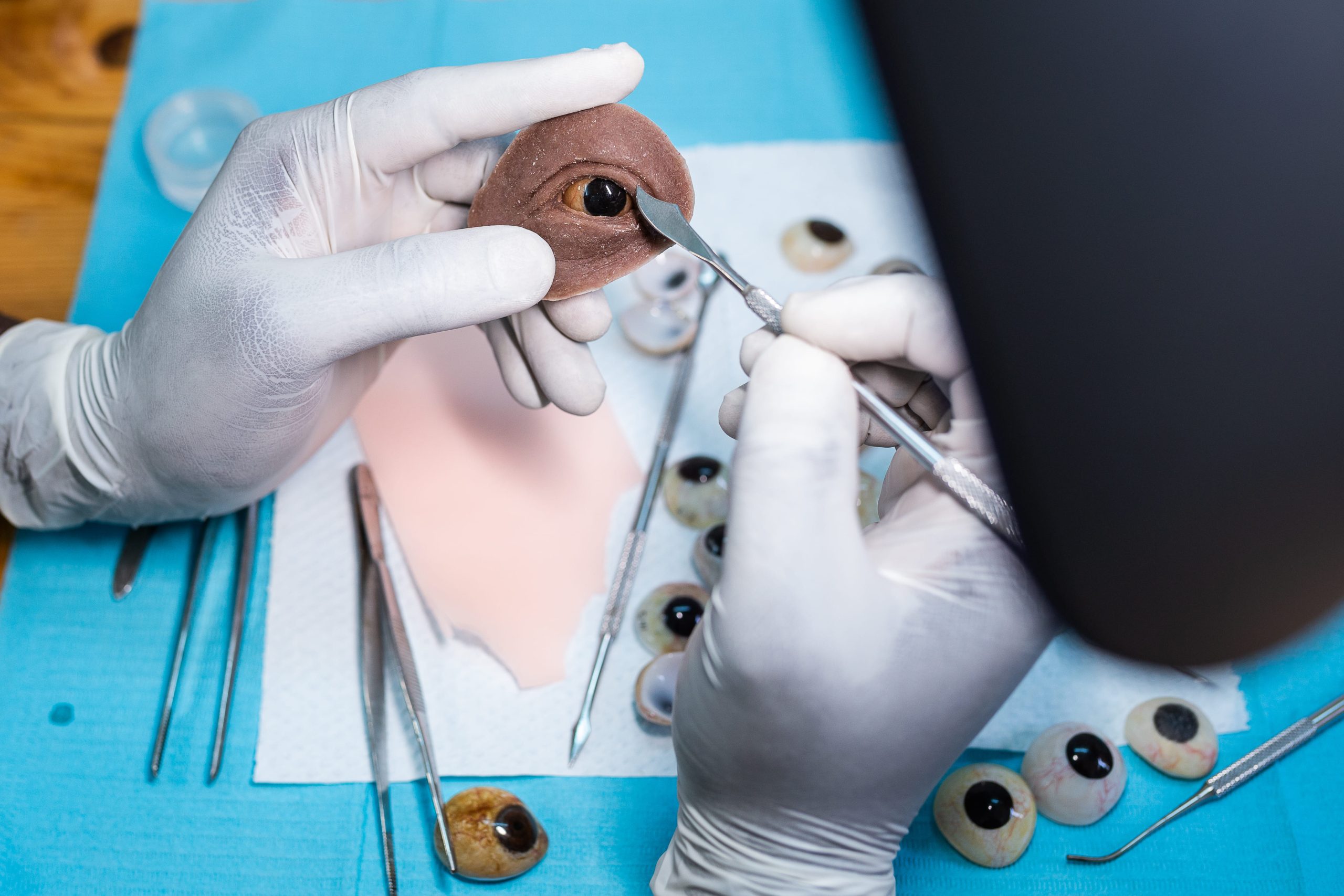Prosthesis/Artificial Eyes
The Difference Between Custom Made and Stock Made Artificial Eyes
We make custom made artificial eyes with a superior natural look..
- Custom-made artificial eyes (ocular prostheses) are recommended by Ocular Plastic Surgeons and Ocularist because the individual characteristics and physical requirements of the wearer are taken into consideration.
- Custom-made artificial eyes generally provide greater comfort, better eye movement and a superior natural looking result.
- A stock artificial eye, as the name implies, is ready-made and are fit by a trial and error method. Most of these glass or plastic stock eyes are mass-produced in a variety of standard sizes, shapes and iris colors.
- The fitter of stock artificial eyes must try several different shapes and sizes into the socket in an effort to find one that appears to fit and look like the companion eye.
Female Patient with missing Left Eye
Female Patient with Stock-made Left Eye
Female Patient with custom-made natural looking Left Eye
Male patient with missing left eye
Male patient with a stock made left eye
Male patient with custom made left eye
- A stock artificial eye, as the name implies, is ready-made and are fit by a trial and error method. Most of these glass or plastic stock eyes are mass-produced in a variety of standard sizes, shapes and iris colors.
- The fitter of stock artificial eyes must try several different shapes and sizes into the socket in an effort to find one that appears to fit and look like the companion eye.
- However, without taking an impression of the socket, there is no assurance that the prefabricated shape selected is the proper shape for the individual socket.
- Stock artificial eyes when offered, are often not any less expensive than custom eyes, but are usually far less satisfactory in terms of fit, comfort and personal iris color matching.
MEASURE SCULPTING & DESIGN
PAINTING
POLISHING
FITTING
HAPPY 🙂
Custom made ocular prosthesis
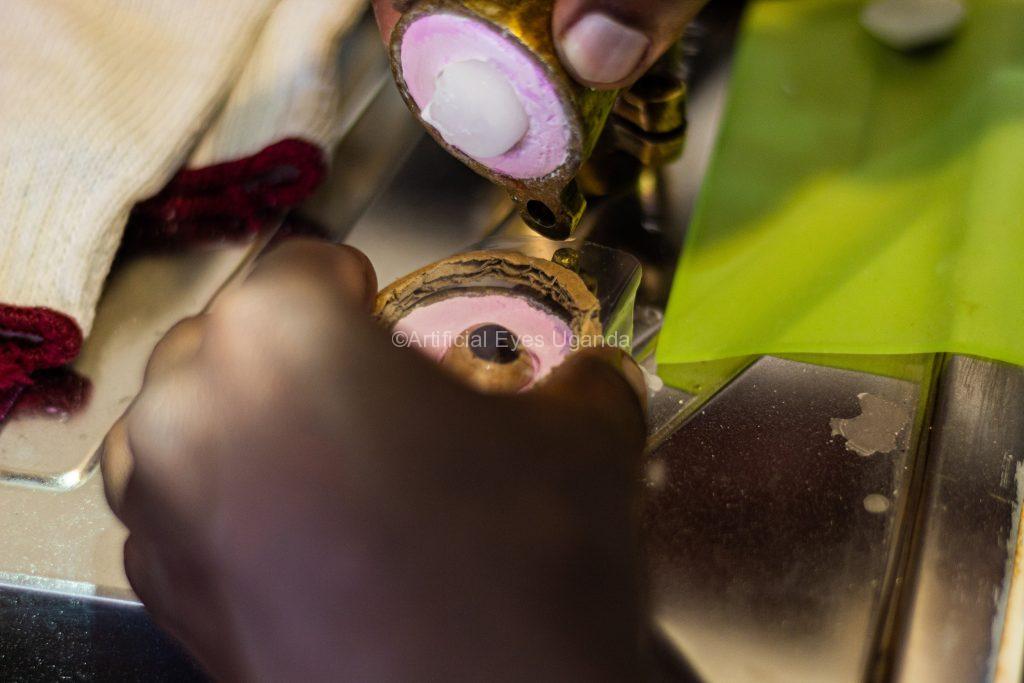
- Any patient who has an anophthalmic socket may benefit from custom made prosthesis this may be post-surgical, after enucleation, evisceration, or orbital exenteration.
- The surgery may have been performed for a condition of intra-ocular tumor, infection, or trauma: none of these conditions is a contraindication for fitting of a custom prosthesis.
- A disfigured blind eye with volume loss such as with phthisis bulbi can receive a custom-prosthesis.
- A painful blind eye or an anterior staphyloma can receive prosthesis after preliminary surgery.
- Congenital anomalies such as severe microphthalmos or anophthalmos can also be fitted with a custom prosthesis.
- A patient who has been previously using stock eyes, experiencing irritation, pain or discharge would also benefit from superior cosmesis, motility and wearer comfort of the custom prosthesis.
- Patients on stock eyes who show enophthalmic appearance, squint, or defective closure of the lids will have improved appearance with a custom made eye.
- Pre-Fitting Assessment.
ABOUT US
We take great passion in creating solutions that can give you so much confidence and encouragement in a situation that can at times be very difficult. We are all highly motivated professionals, constantly working to produce prostheses, the best each time we do it. We remain well connected with those in our industry, to evolve in the best we can be while learning from others.
FOLLOW US
ALL CONTACTS
- Queen's Road, Entebbe
- +256754077479
- contact@artificialeyesuganda.com
- Only On Appointment
- P.O.Box 738, Entebbe, Wakiso, Uganda
- Artificial Eyes - Copyright 2021





